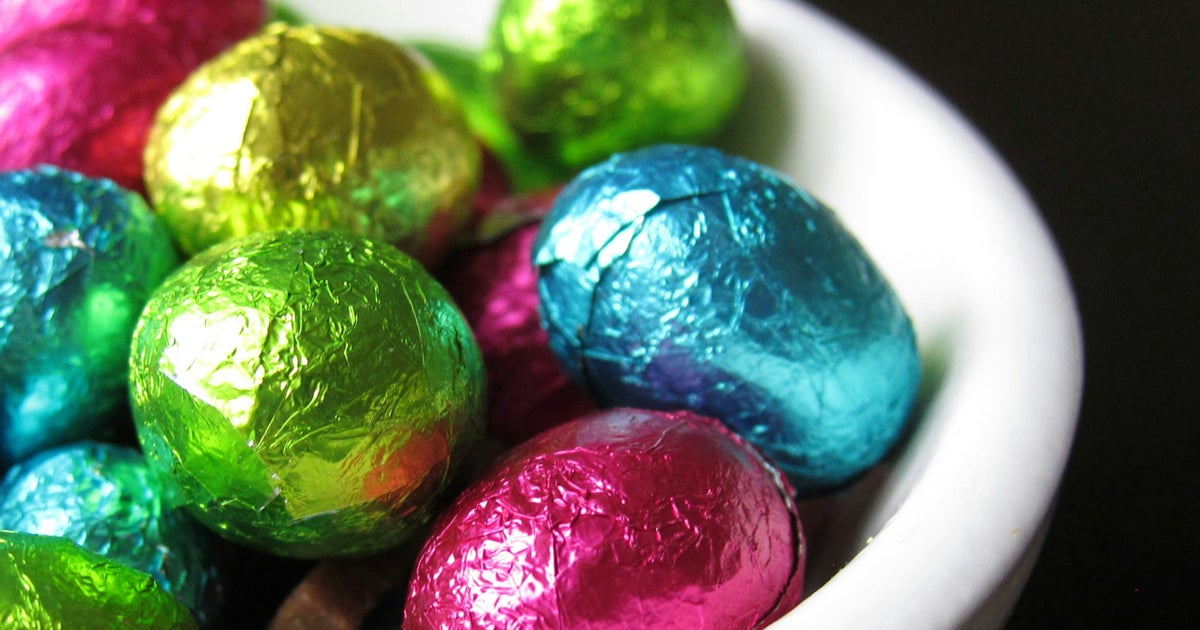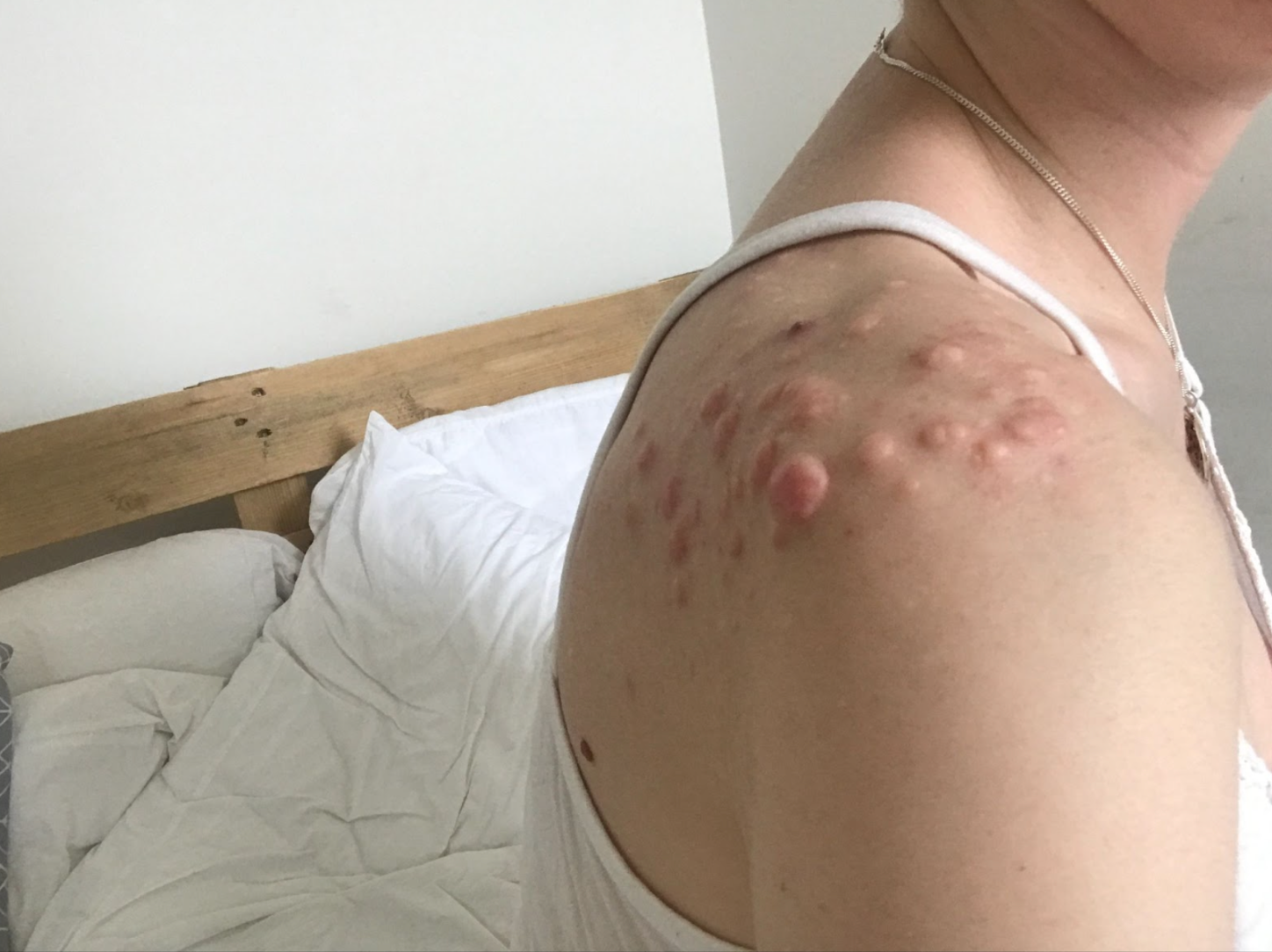
Recent studies reveal that about 700,000 people in the UK are autistic, which works out as around one in every 100 people in the population. Research also indicates that the numbers could be twice as high, as there are so many people still undiagnosed.
With this in mind, Dr Selina Warlow, a clinical psychologist and owner of The Nook Neurodevelopmental Clinic, has shared a glossary of terms that give insights into some of the traits of autism, providing support when it comes to recognising symptoms.
Advertisement
She says: “Conversation around neurodiversity is becoming normalised, and that’s so positive to see.
“But the figures show a need for more awareness to help people identify whether they [are autistic], so they can start their assessment journey. Receiving a diagnosis can open access to expert resources that support autistic people to thrive in society.”
From masking to autistic burnout – a psychologist explains 8 traits of autism
Stimming (Self-Stimulatory Behaviour)
“Stimming is a term that refers to repetitive movements or sounds often associated with autism to manage sensory overload. This includes rocking, tapping, hand-flapping and spinning”, explains Dr Warlow.
While these aren’t exclusive to autistic people, autistic people are more likely to use them as tools of self-regulation.
Advertisement
“Masking is behaviour autistic people may use to hide their true characteristics to match those of neurotypical individuals”, says Dr Warlow.
“This could involve copying facial expressions, planning conversations in advance, or holding in ‘stimming’, for example swapping hand clapping, with playing with a pen.”
Autistic burnout
“Autistic burnout – being extremely tired both mentally and physically – can be associated with the act of ‘masking’ (concealing autistic behaviours) for a long period of time, or sensory or social overload.”
Advertisement
Dr Warlow shares that some of theymptoms of autistic burnout include withdrawal from social life, reduced performance, and increased sensitivity to certain stimuli.
Literal thinking
For some autistic people, language is always very literal, which can result in confusion with figures of speech, irony or indirect requests.
“For instance”, Dr Warlow adds, “being told to ‘pull your socks up’ might be understood literally, not as a motivational phrase, so using exact words may be more helpful during conversations.”
Advertisement
Assessment
Prior to diagnosis, a person showing signs of being autistic may choose to be assessed. This process can either happen through the NHS by visiting your GP or you can seek a private assessment.
Dr Warlow says that a diagnosis can be both “an emotional, but also empowering time”, while you learn about autism and adjust your lives to cater for its strengths and needs.
Hyperfocus
Hyperfocus is where an autistic person is able to focus intensely on an activity, and can become absorbed in it to the point of forgetting about the time. This is useful in work or hobbies but can result in neglect of other aspects of life such as food or rest.
Advertisement
Dr Warlow advises: “If it is possible to identify hyperfocus patterns, alarms can be used to help keep tasks moving.”
Special interests
Autistic people can have a particular interest which they find fascinating and dedicate lots of time to learning about. Special interests usually begin presenting in childhood but can also form as an adult. Special interests could include anything from dinosaurs or superheroes to hobbies like gardening.
Dr Warlow adds: “Chris Packham is an example of a person with autism who turned his childhood special interest in animals into a successful career, becoming one of the UK’s best-loved natural world TV presenters.”
Advertisement
Dr Warlow reveals that the term AuDHD – a combination of Autism Spectrum Disorder (ASD) and Attention Deficit Hyperactivity Disorder (ADHD) – is gaining traction in the neurodiverse community, with over 12,000 monthly Google searches, 375,000 posts on TikTok and 172,000 hashtags on Instagram.
“Many autistic people also have ADHD, which can bring certain benefits and difficulties at the same time. While autism is characterised by a desire for sameness and a focus on details, ADHD is defined by impulsivity and difficulty focusing.”
If you think you may be autistic, speak to your GP for a referral.



















 Pots + Pans: cookgoldilocks.com/senpaikai\n
Pots + Pans: cookgoldilocks.com/senpaikai\n Chef Tweezers: https://amzn.to/33389KU\n
Chef Tweezers: https://amzn.to/33389KU\n Chef’s knife: cookgoldilocks.com/senpaikai\n
Chef’s knife: cookgoldilocks.com/senpaikai\n Spoons + Spatulas: cookgoldilocks.com/senpaikai\n
Spoons + Spatulas: cookgoldilocks.com/senpaikai\n Cast iron pan: https://amzn.to/3t7dZpj","options":{"_cc_load_policy":{"label":"Closed captions","value":false},"_end":{"label":"End on","placeholder":"ex.: 11, 1m10s","value":""},"_start":{"label":"Start from","placeholder":"ex.: 11, 1m10s","value":""},"click_to_play":{"label":"Add your own player cover","value":false}},"provider_name":"YouTube","thumbnail_height":720,"thumbnail_url":"https://i.ytimg.com/vi/AthENEDVtjc/maxresdefault.jpg","thumbnail_width":1280,"title":"Why Restaurant Rice is Better","type":"video","url":"https://www.youtube.com/watch?v=AthENEDVtjc","version":"1.0"},"flags":[],"enhancements":{},"fullBleed":false,"options":{"theme":"life","device":"desktop","editionInfo":{"id":"uk","name":"U.K.","link":"https://www.huffingtonpost.co.uk","locale":"en_GB"},"originalEdition":"uk","isMapi":false,"isAmp":false,"isAdsFree":false,"isVideoEntry":false,"isEntry":true,"isMt":false,"entryId":"67e28b46e4b07be5218749d2","entryPermalink":"https://www.huffingtonpost.co.uk/entry/restaurant-level-rice-at-home_uk_67e28b46e4b07be5218749d2","entryTagsList":"food,recipes,rice","sectionSlug":"lifestyle","deptSlug":null,"sectionRedirectUrl":null,"subcategories":"","isWide":false,"headerOverride":null,"noVideoAds":false,"disableFloat":false,"isNative":false,"commercialVideo":{"provider":"custom","site_and_category":"uk.lifestyle","package":null},"isHighline":false,"vidibleConfigValues":{"cid":"60afc140cf94592c45d7390c","disabledWithMapiEntries":false,"overrides":{"all":"60b8e525cdd90620331baaf4"},"whitelisted":["56c5f12ee4b03a39c93c9439","56c6056ee4b01f2b7e1b5f35","59bfee7f9e451049f87f550b","5acccbaac269d609ef44c529","570278d2e4b070ff77b98217","57027b4be4b070ff77b98d5c","56fe95c4e4b0041c4242016b","570279cfe4b06d08e3629954","5ba9e8821c2e65639162ccf1","5bcd9904821576674bc55ced","5d076ca127f25f504327c72e","5b35266b158f855373e28256","5ebac2e8abddfb04f877dff2","60b8e525cdd90620331baaf4","60b64354b171b7444beaff4d","60d0d8e09340d7032ad0fb1a","60d0d90f9340d7032ad0fbeb","60d0d9949340d7032ad0fed3","60d0d9f99340d7032ad10113","60d0daa69340d7032ad104cf","60d0de02b627221e9d819408"],"playlists":{"default":"57bc306888d2ff1a7f6b5579","news":"56c6dbcee4b04edee8beb49c","politics":"56c6dbcee4b04edee8beb49c","entertainment":"56c6e7f2e4b0983aa64c60fc","tech":"56c6f70ae4b043c5bdcaebf9","parents":"56cc65c2e4b0239099455b42","lifestyle":"56cc66a9e4b01f81ef94e98c"},"playerUpdates":{"56c6056ee4b01f2b7e1b5f35":"60b8e525cdd90620331baaf4","56c5f12ee4b03a39c93c9439":"60d0d8e09340d7032ad0fb1a","59bfee7f9e451049f87f550b":"60d0d90f9340d7032ad0fbeb","5acccbaac269d609ef44c529":"60d0d9949340d7032ad0fed3","5bcd9904821576674bc55ced":"60d0d9f99340d7032ad10113","5d076ca127f25f504327c72e":"60d0daa69340d7032ad104cf","5ebac2e8abddfb04f877dff2":"60d0de02b627221e9d819408"}},"connatixConfigValues":{"defaultPlayer":"8b034f64-513c-4987-b16f-42d6008f7feb","clickToPlayPlayer":"5a777b9b-81fe-41a6-8302-59e9953ee8a2","videoPagePlayer":"19654b65-409c-4b38-90db-80cbdea02cf4"},"topConnatixThumnbailSrc":"data:image/png;base64,iVBORw0KGgoAAAANSUhEUgAAAAEAAAABCAQAAAC1HAwCAAAAC0lEQVR42mNkYAAAAAYAAjCB0C8AAAAASUVORK5CYII=","customAmpComponents":[],"ampAssetsUrl":"https://amp.assets.huffpost.com","videoTraits":null,"positionInUnitCounts":{"buzz_head":{"count":0},"buzz_body":{"count":0},"buzz_bottom":{"count":0}},"positionInSubUnitCounts":{"article_body":{"count":10},"blog_summary":{"count":0},"before_you_go_content":{"count":0}},"connatixCountsHelper":{"count":0},"buzzfeedTracking":{"context_page_id":"67e28b46e4b07be5218749d2","context_page_type":"buzz","destination":"huffpost","mode":"desktop","page_edition":"en-uk"},"tags":[{"name":"Food","slug":"food","links":{"relativeLink":"news/food","permalink":"https://www.huffingtonpost.co.uk/news/food","mobileWebLink":"https://www.huffingtonpost.co.uk/news/food"},"relegenceSubjectId":979740,"section":{"title":"Life","slug":"lifestyle"},"topic":{"title":"Food & Drink","slug":"food-drink","overridesSectionLabel":false},"url":"https://www.huffingtonpost.co.uk/news/food-drink/"},{"name":"Recipes","slug":"recipes","links":{"relativeLink":"news/recipes","permalink":"https://www.huffingtonpost.co.uk/news/recipes","mobileWebLink":"https://www.huffingtonpost.co.uk/news/recipes"},"section":{"title":"Life","slug":"lifestyle"},"topic":{"title":"Recipes","slug":"recipes","overridesSectionLabel":false},"url":"https://www.huffingtonpost.co.uk/news/recipes/"},{"name":"rice","slug":"rice","links":{"relativeLink":"news/rice","permalink":"https://www.huffingtonpost.co.uk/news/rice","mobileWebLink":"https://www.huffingtonpost.co.uk/news/rice"},"url":"https://www.huffingtonpost.co.uk/news/rice/"}],"isLiveblogLive":null,"isLiveblog":false,"cetUnit":"buzz_body","bodyAds":["
Cast iron pan: https://amzn.to/3t7dZpj","options":{"_cc_load_policy":{"label":"Closed captions","value":false},"_end":{"label":"End on","placeholder":"ex.: 11, 1m10s","value":""},"_start":{"label":"Start from","placeholder":"ex.: 11, 1m10s","value":""},"click_to_play":{"label":"Add your own player cover","value":false}},"provider_name":"YouTube","thumbnail_height":720,"thumbnail_url":"https://i.ytimg.com/vi/AthENEDVtjc/maxresdefault.jpg","thumbnail_width":1280,"title":"Why Restaurant Rice is Better","type":"video","url":"https://www.youtube.com/watch?v=AthENEDVtjc","version":"1.0"},"flags":[],"enhancements":{},"fullBleed":false,"options":{"theme":"life","device":"desktop","editionInfo":{"id":"uk","name":"U.K.","link":"https://www.huffingtonpost.co.uk","locale":"en_GB"},"originalEdition":"uk","isMapi":false,"isAmp":false,"isAdsFree":false,"isVideoEntry":false,"isEntry":true,"isMt":false,"entryId":"67e28b46e4b07be5218749d2","entryPermalink":"https://www.huffingtonpost.co.uk/entry/restaurant-level-rice-at-home_uk_67e28b46e4b07be5218749d2","entryTagsList":"food,recipes,rice","sectionSlug":"lifestyle","deptSlug":null,"sectionRedirectUrl":null,"subcategories":"","isWide":false,"headerOverride":null,"noVideoAds":false,"disableFloat":false,"isNative":false,"commercialVideo":{"provider":"custom","site_and_category":"uk.lifestyle","package":null},"isHighline":false,"vidibleConfigValues":{"cid":"60afc140cf94592c45d7390c","disabledWithMapiEntries":false,"overrides":{"all":"60b8e525cdd90620331baaf4"},"whitelisted":["56c5f12ee4b03a39c93c9439","56c6056ee4b01f2b7e1b5f35","59bfee7f9e451049f87f550b","5acccbaac269d609ef44c529","570278d2e4b070ff77b98217","57027b4be4b070ff77b98d5c","56fe95c4e4b0041c4242016b","570279cfe4b06d08e3629954","5ba9e8821c2e65639162ccf1","5bcd9904821576674bc55ced","5d076ca127f25f504327c72e","5b35266b158f855373e28256","5ebac2e8abddfb04f877dff2","60b8e525cdd90620331baaf4","60b64354b171b7444beaff4d","60d0d8e09340d7032ad0fb1a","60d0d90f9340d7032ad0fbeb","60d0d9949340d7032ad0fed3","60d0d9f99340d7032ad10113","60d0daa69340d7032ad104cf","60d0de02b627221e9d819408"],"playlists":{"default":"57bc306888d2ff1a7f6b5579","news":"56c6dbcee4b04edee8beb49c","politics":"56c6dbcee4b04edee8beb49c","entertainment":"56c6e7f2e4b0983aa64c60fc","tech":"56c6f70ae4b043c5bdcaebf9","parents":"56cc65c2e4b0239099455b42","lifestyle":"56cc66a9e4b01f81ef94e98c"},"playerUpdates":{"56c6056ee4b01f2b7e1b5f35":"60b8e525cdd90620331baaf4","56c5f12ee4b03a39c93c9439":"60d0d8e09340d7032ad0fb1a","59bfee7f9e451049f87f550b":"60d0d90f9340d7032ad0fbeb","5acccbaac269d609ef44c529":"60d0d9949340d7032ad0fed3","5bcd9904821576674bc55ced":"60d0d9f99340d7032ad10113","5d076ca127f25f504327c72e":"60d0daa69340d7032ad104cf","5ebac2e8abddfb04f877dff2":"60d0de02b627221e9d819408"}},"connatixConfigValues":{"defaultPlayer":"8b034f64-513c-4987-b16f-42d6008f7feb","clickToPlayPlayer":"5a777b9b-81fe-41a6-8302-59e9953ee8a2","videoPagePlayer":"19654b65-409c-4b38-90db-80cbdea02cf4"},"topConnatixThumnbailSrc":"data:image/png;base64,iVBORw0KGgoAAAANSUhEUgAAAAEAAAABCAQAAAC1HAwCAAAAC0lEQVR42mNkYAAAAAYAAjCB0C8AAAAASUVORK5CYII=","customAmpComponents":[],"ampAssetsUrl":"https://amp.assets.huffpost.com","videoTraits":null,"positionInUnitCounts":{"buzz_head":{"count":0},"buzz_body":{"count":0},"buzz_bottom":{"count":0}},"positionInSubUnitCounts":{"article_body":{"count":10},"blog_summary":{"count":0},"before_you_go_content":{"count":0}},"connatixCountsHelper":{"count":0},"buzzfeedTracking":{"context_page_id":"67e28b46e4b07be5218749d2","context_page_type":"buzz","destination":"huffpost","mode":"desktop","page_edition":"en-uk"},"tags":[{"name":"Food","slug":"food","links":{"relativeLink":"news/food","permalink":"https://www.huffingtonpost.co.uk/news/food","mobileWebLink":"https://www.huffingtonpost.co.uk/news/food"},"relegenceSubjectId":979740,"section":{"title":"Life","slug":"lifestyle"},"topic":{"title":"Food & Drink","slug":"food-drink","overridesSectionLabel":false},"url":"https://www.huffingtonpost.co.uk/news/food-drink/"},{"name":"Recipes","slug":"recipes","links":{"relativeLink":"news/recipes","permalink":"https://www.huffingtonpost.co.uk/news/recipes","mobileWebLink":"https://www.huffingtonpost.co.uk/news/recipes"},"section":{"title":"Life","slug":"lifestyle"},"topic":{"title":"Recipes","slug":"recipes","overridesSectionLabel":false},"url":"https://www.huffingtonpost.co.uk/news/recipes/"},{"name":"rice","slug":"rice","links":{"relativeLink":"news/rice","permalink":"https://www.huffingtonpost.co.uk/news/rice","mobileWebLink":"https://www.huffingtonpost.co.uk/news/rice"},"url":"https://www.huffingtonpost.co.uk/news/rice/"}],"isLiveblogLive":null,"isLiveblog":false,"cetUnit":"buzz_body","bodyAds":["














